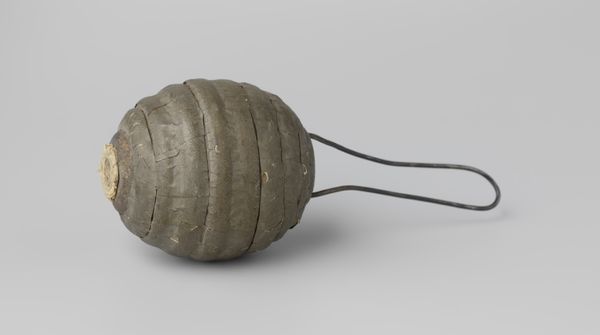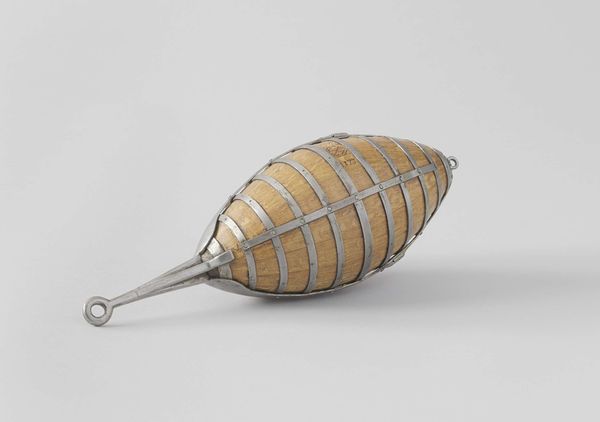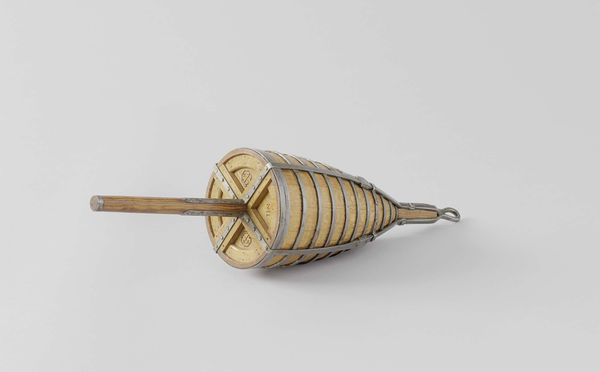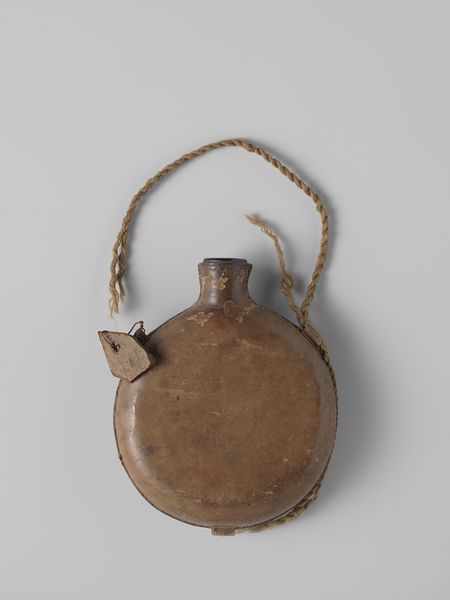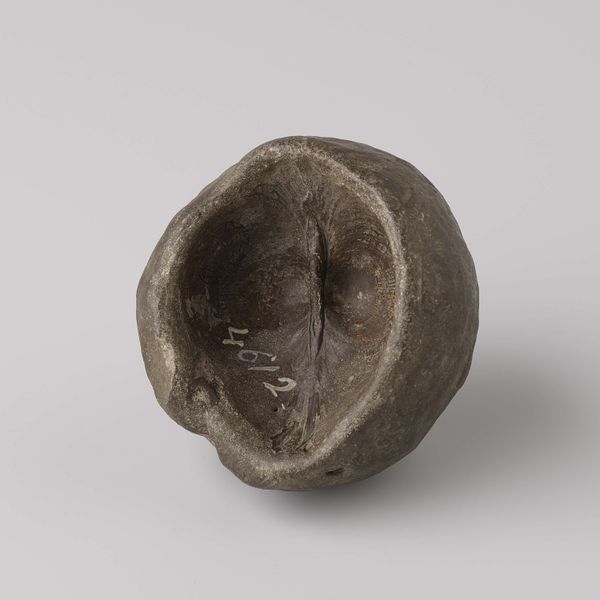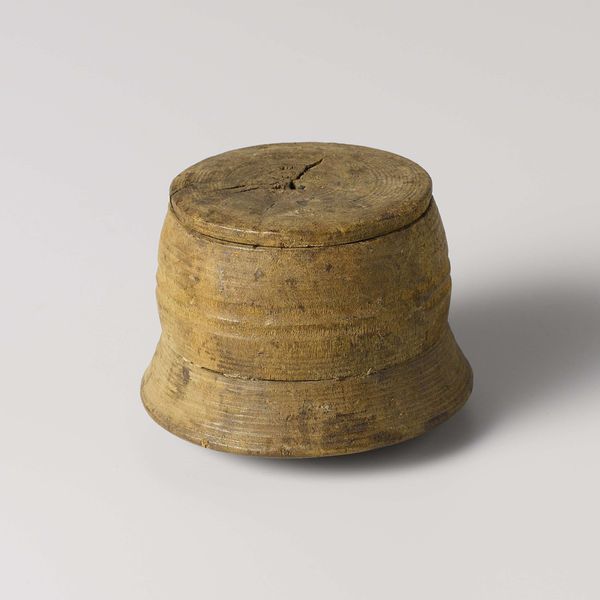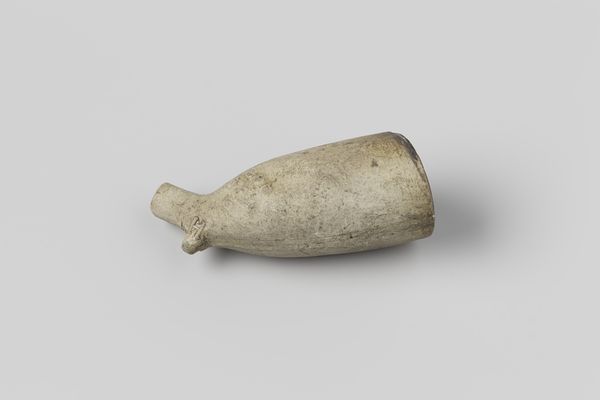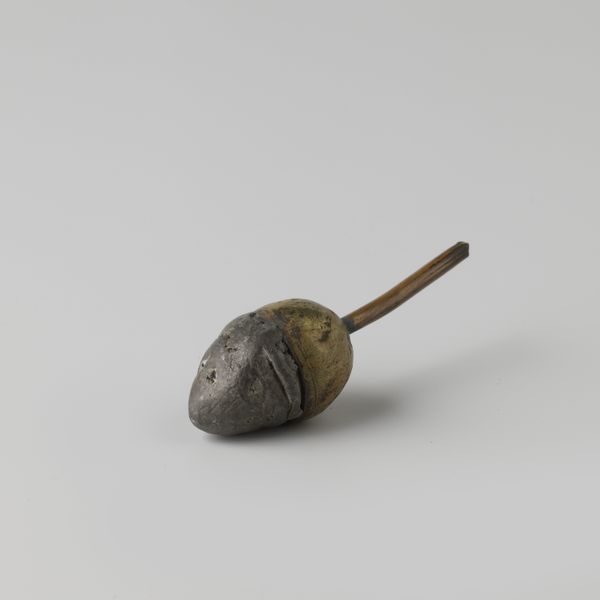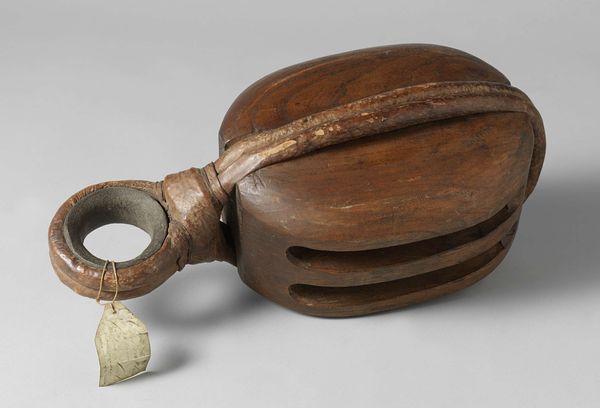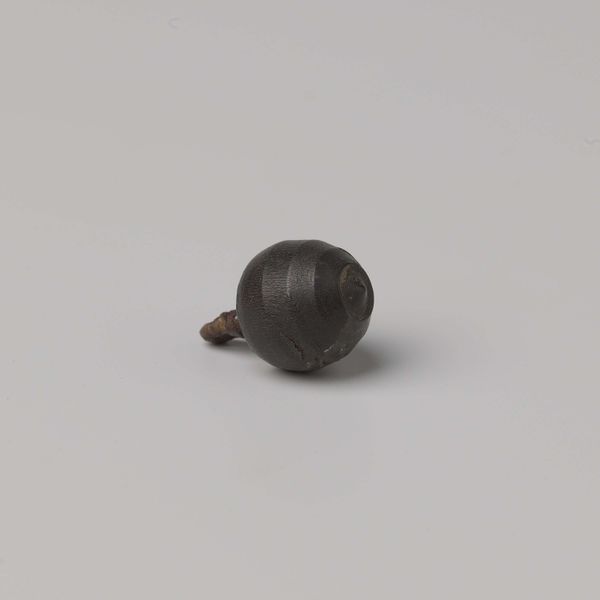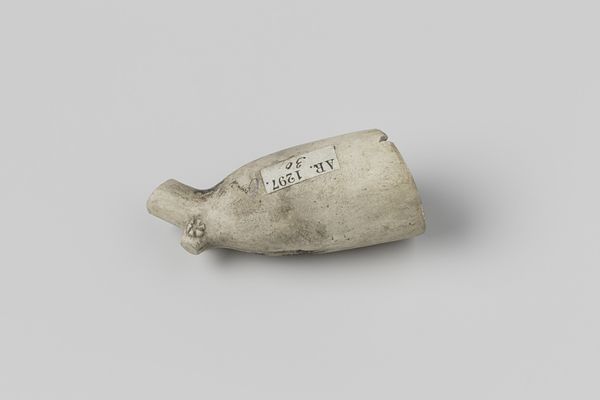
assemblage, found-object, sculpture
#
assemblage
#
found-object
#
sculpture
#
romanticism
Dimensions: width 60.5 cm, height 13 cm, depth 44 cm, length 9 cm, diameter 4.5 cm
Copyright: Rijks Museum: Open Domain
Editor: This curious sculpture, “Bal voor sjako officieren,” which translates to “Ball for shako officers”, dates back to 1830-1831. It appears to be an assemblage using found objects. The object’s humble, almost drab appearance strikes me. What significance do you find in this... artifact? Curator: Let’s think about the labor and materials. The very title highlights military rank and status. Shako officers were part of a specific social hierarchy. The "ball" is crafted, perhaps from repurposed materials, imbuing it with inherent social context: it reflects limited means perhaps used to mimic and mock social elites. Editor: So you’re saying the materials themselves—their cheapness, their availability—speak to a social commentary? Curator: Precisely. Consider the means of production, especially when contrasting it against the implied grandeur of a "ball" for officers. Is this an official toy or a handmade piece perhaps used in a game of cricket by someone lower in the military? It could subvert military glamour, highlighting the disconnect between officer elegance and the materials soldiers commonly access. What social critique are we to find in its deliberate contrast? Editor: The found objects become incredibly poignant then! Is it meant to democratize entertainment, or mock the elite's extravagance with materials that seem deliberately… rough? Curator: Exactly! And the act of assemblage, of bringing together these disparate parts, challenges our preconceived notions about what constitutes ‘high art.’ Are we meant to consider military life, or the nature of play among specific social groups? We have to analyze both materiality and labor that gave rise to the sculpture to start comprehending Romantic Era culture. Editor: That’s a perspective shift for me. I often get caught up in aesthetic considerations alone, but understanding production adds such depth. Thanks for your insights! Curator: The beauty lies within the blend between labor and utility – it’s the history within the ordinary that speaks the loudest.
Comments
No comments
Be the first to comment and join the conversation on the ultimate creative platform.

